Don't wanna be here? Send us removal request.
Text
What is the hardest programming language?
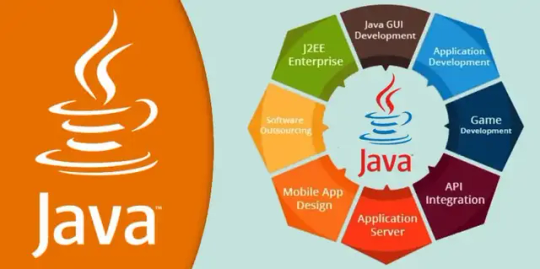
In the ever-evolving world of software development, programmers often debate which programming language is the hardest to learn and master. While every language has its own challenges and learning curves, some are universally considered more complex due to their syntax, abstraction level, memory management, or paradigm.
This article explores some of the most difficult programming languages, comparing them to Java—a widely-used, object-oriented language known for its balance of complexity and usability. Whether you're a beginner looking to start your programming journey or an experienced Java developer exploring new horizons, understanding the hardest languages can give you valuable insights into the broader programming landscape.
Understanding “Hard” in Programming
Before naming the hardest language, let’s clarify what “hard” really means in this context. A language may be considered difficult based on:
Complex syntax
Low-level memory manipulation
Steep learning curve
Lack of documentation or community support
Unfamiliar paradigms (e.g., functional or logic programming)
What might be difficult for one programmer could be intuitive for another. However, there are languages that most developers agree are particularly challenging.
The Hardest Programming Languages (Compared with Java)
1. Assembly Language
Assembly is one of the lowest-level programming languages still in use. It interacts directly with a computer’s hardware, offering almost no abstraction.
Why It’s Hard:
Extremely detailed and verbose
Requires deep knowledge of computer architecture
No error handling or built-in functions
Compared to Java: Java offers high-level abstractions, garbage collection, and built-in libraries, making it vastly easier to read, write, and maintain than Assembly.
2. C and C++
While C is considered powerful for system-level programming, it’s also notorious for its manual memory management and pointer arithmetic.
Why It’s Hard:
Requires manual memory allocation and deallocation
High risk of segmentation faults and memory leaks
Complex syntax (especially in C++)
Compared to Java: Java handles memory automatically with garbage collection and has a cleaner object-oriented model, making it more approachable for beginners.
3. Haskell
Haskell is a purely functional programming language with a completely different mindset from imperative languages like Java.
Why It’s Hard:
Lazy evaluation model
Complex type system
Abstract mathematical concepts
Compared to Java: Java is imperative and object-oriented, which aligns more naturally with how humans solve problems step-by-step. Haskell requires a paradigm shift.
4. Prolog
Prolog is a logic programming language used for AI and computational linguistics.
Why It’s Hard:
Uses declarative logic rather than sequential code
Requires a strong grasp of formal logic
Backtracking and unification can be hard to debug
Compared to Java: Java’s control flow, error handling, and object-oriented design are more straightforward and intuitive for mainstream programming tasks.
5. Malbolge (For Curiosity!)
Malbolge is widely considered the hardest programming language, but it was intentionally designed to be nearly impossible to use.
Why It’s Hard:
Self-altering code
Extremely limited documentation
No practical use
Compared to Java: Java is engineered for readability and maintainability—Malbolge is the exact opposite.
Why Java Is Often a Preferred Language?
Despite some complexity, Java is regarded as one of the best-balanced programming languages. It finds a middle ground between simplicity and power:
Readable syntax (compared to C or Assembly)
Object-oriented structure makes it scalable
Automatic memory management through garbage collection
Robust error handling and exception framework
Massive ecosystem of libraries and frameworks
Strong community and documentation support
These features make Java an ideal starting point for learners and a powerful tool for professionals building large-scale applications.
Who Should Still Learn These Hard Languages?
Even if they’re not beginner-friendly, hard programming languages have their own place and value:
C/C++ for system-level programming or embedded systems
Assembly for hardware interaction and performance optimization
Haskell for academic research or advanced functional programming
Prolog for AI and natural language processing
Knowing Java can act as a strong foundation, making the transition into harder languages easier as your career progresses.
Conclusion: Hardest Isn’t Always Best
In the end, the hardest programming language depends on what you’re trying to achieve. Languages like Assembly, Haskell, and Prolog may be more difficult than Java, but they serve specific purposes where they shine.
Java remains one of the most versatile, developer-friendly, and industry-relevant languages. If you’ve already learned Java or plan to start with it, you’ve chosen a language that strikes a great balance between power and accessibility.
While it's admirable to challenge yourself with harder languages, always remember: write code that solves problems, not just code that looks hard.
0 notes
Text
Which is easy to learn Java or C++?
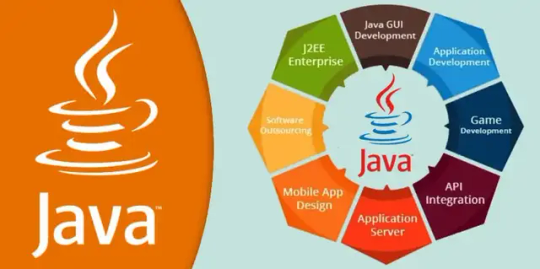
When starting a programming journey, one of the most common questions among beginners is: “Should I learn Java or C++?” Both are powerful, object-oriented programming languages used in a wide range of applications—from mobile apps and desktop software to system-level tools and enterprise systems.
While both have their merits, they differ significantly in terms of complexity, syntax, memory management, and learning curve. This article provides a detailed comparison, with an emphasis on Java, to help you decide which language is easier to learn and why many beginners gravitate toward Java.
Overview of Java and C++
Java is a high-level, object-oriented language developed by Sun Microsystems (now Oracle). It emphasizes portability, safety, and ease of development. Java applications run on the Java Virtual Machine (JVM), which allows "write once, run anywhere" capability.
C++, developed by Bjarne Stroustrup as an extension of C, is a mid-level language. It supports both procedural and object-oriented programming. C++ gives programmers fine-grained control over memory and system resources, making it ideal for performance-critical applications.
Syntax and Readability
1. Java: Cleaner and Simpler
Java was designed with simplicity and readability in mind. It avoids complex features like pointers and manual memory management. Java code tends to be easier to understand for beginners due to its structured and minimalistic syntax.
C++: Verbose and Complex
C++ supports multiple paradigms and has features like pointers, multiple inheritance, operator overloading, and templates. While powerful, these features can confuse new learners.
Verdict: Java is easier to read and write, especially for beginners.
2. Memory Management
Java: Automatic Garbage Collection
Java handles memory allocation and deallocation automatically through Garbage Collection (GC). This reduces the chance of memory leaks or segmentation faults, which are common issues in C++.
C++: Manual Memory Management
C++ requires manual allocation and deallocation of memory using new and delete. Improper memory handling can lead to bugs, crashes, and security vulnerabilities.
Verdict: Java is easier to manage in terms of memory and safety.
3. Compilation and Portability
Java: Platform Independent
Java code is compiled into bytecode, which runs on the JVM. This makes Java programs platform-independent—you can run the same program on Windows, Linux, or macOS without changes.
C++: Platform Dependent
C++ code is compiled into native machine code. While this leads to faster performance, it also means that C++ programs are platform-specific unless specially configured for portability.
Verdict: Java wins for portability and ease of deployment.
4. Error Handling and Debugging
Java: Strong Exception Handling
Java has a robust exception handling mechanism that encourages clean code and effective debugging. Errors are handled using try-catch blocks and specific exception classes.
C++: Less Emphasis on Exceptions
While C++ does support exceptions, many older C++ projects use return codes instead of proper exception handling, making debugging harder and error-prone.
Verdict: Java provides a more consistent and beginner-friendly approach to handling errors.
5. Use Cases and Industry Demand
Java: Enterprise and Android Development
Java is the backbone of enterprise applications, Android development, financial systems, and web platforms. It's in high demand globally and has a mature ecosystem with frameworks like Spring, Hibernate, and Maven.
C++: Systems and Game Programming
C++ is preferred in areas requiring high performance, such as game engines, real-time systems, embedded systems, and operating systems.
Verdict: For beginners interested in app development, Java offers a more direct career path.
6. Community and Learning Resources
Java: Vast Community Support
Java has an enormous community of developers, tons of tutorials, interactive platforms, and official documentation. It is also widely taught in universities.
C++: Steeper Learning Curve
C++ resources are available but often assume some level of programming experience. The learning path can be less structured for newcomers.
Verdict: Java offers a more supportive ecosystem for new learners.
Conclusion
When comparing Java and C++ through the lens of beginner-friendliness, Java stands out as the easier language to learn. Its simplified syntax, automatic memory management, strong error handling, and platform independence make it more accessible for those new to programming.
That said, C++ remains an incredibly powerful tool, especially in performance-critical applications. However, starting with Java can provide a smoother entry into the world of programming, and later transitioning to C++ becomes easier once the foundational concepts are clear.
Final Recommendation
If your goal is to build Android apps, web services, or enterprise software, Java is the better starting point. It’s structured, readable, and supported by a vibrant community.
If you're interested in system programming, game development, or working close to the hardware, you may eventually need to learn C++, but starting with Java will give you a solid foundation to grow from.
1 note
·
View note
Text
Where can I practice Java coding?
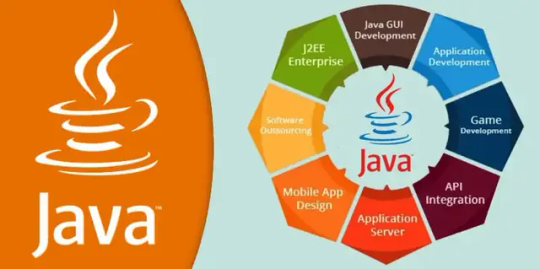
Java is one of the most popular programming languages in the world, powering everything from Android apps to large-scale enterprise software. However, mastering Java requires more than just reading theory—you need to write real code, solve challenges, and build projects.
If you're wondering, “Where can I practice Java coding?”, this article will walk you through the best platforms and methods for hands-on Java learning. Whether you're a complete beginner or an intermediate developer looking to sharpen your skills, the following resources offer a variety of opportunities for growth.
Why Practicing Java Coding Matters?
Before jumping into the platforms, it's important to understand why practice is essential in learning Java:
Reinforces syntax, data structures, and OOP principles
Builds logical and analytical thinking
Improves problem-solving and debugging skills
Prepares you for coding interviews and job roles
Helps you write clean, efficient, and optimized code
Top Online Platforms to Practice Java
1. HackerRank
Best for: Algorithmic challenges, interview prep, Java fundamentals HackerRank offers a dedicated Java domain where you can practice coding problems categorized by difficulty. It includes challenges related to strings, loops, arrays, and OOP in Java.
✔ Pros:
Instant feedback
Certificate of completion
Used by tech companies for recruitment
2. LeetCode
Best for: Competitive programming and job preparation LeetCode has a vast library of algorithmic questions and system design problems. While it supports multiple languages, Java is among the most popular on the platform.
✔ Pros:
Company-specific interview questions
Code explanation discussions
Great for Java back-end development roles
3. CodeGym
Best for: Absolute Java beginners CodeGym is focused entirely on Java. Its course structure is gamified, with hundreds of mini-tasks that walk you through Java basics to advanced topics.
✔ Pros:
Designed for learning Java step by step
Gamified learning experience
Real-time code validation
4. GeeksforGeeks Practice
Best for: Data structures and core Java concepts GeeksforGeeks provides an extensive Java programming track that includes quizzes, theory, and practical exercises.
✔ Pros:
Covers both Java and CS fundamentals
Popular among Indian students and job seekers
Interview-centric content
5. Exercism
Best for: Mentorship and community learning Exercism offers free Java practice problems with human mentoring. It’s ideal if you want guidance and feedback on how to improve your code.
✔ Pros:
Free mentorship
Focus on writing clean code
Community-driven reviews
6. Edabit
Best for: Quick, beginner-friendly Java problems Edabit provides bite-sized exercises with instant validation, making it a great platform for daily practice.
✔ Pros:
Simple UI
Beginner-friendly
Learn-by-doing approach
Practice Through Java Projects
In addition to platforms, building real-world projects is one of the best ways to solidify your Java knowledge. Some ideas include:
To-Do List App (uses OOP and GUI frameworks like JavaFX)
Banking System (great for practicing classes and file handling)
Chat Application (learn about networking in Java)
Library Management System (implement CRUD operations and collections)
Projects allow you to combine everything you learn—from variables and loops to classes, inheritance, and file I/O.
Enroll in Java-Focused Courses
Many online courses and bootcamps also offer coding environments where you can practice directly in-browser. Platforms like:
Coursera (Java Specializations)
Udemy (Java Development Bootcamps)
JetBrains Academy (Java programming by building projects)
These combine video lectures, quizzes, and practice exercises in one streamlined learning path.
Practice Java Locally Using IDEs
You can also install IntelliJ IDEA, Eclipse, or NetBeans—all professional-grade Java IDEs—for offline coding.
Advantages of coding locally:
Better understanding of real-world dev environments
Practice with build tools like Maven or Gradle
Access to advanced debugging tools and code analysis
Tips for Practicing Java Effectively
Practice daily even for 30 minutes
Start with basics, then move to advanced problems
Join online forums like Stack Overflow or Reddit
Read and review other developers’ code
Work on open-source Java projects on GitHub
Final Thoughts
Practicing Java coding is crucial to becoming a confident developer. From structured learning platforms like HackerRank and CodeGym to real-world projects and local development environments, there are plenty of options to suit your learning style.
By consistently writing Java code, challenging yourself with problems, and experimenting with real-world applications, you’ll not only master Java syntax but also become a better problem solver and programmer overall.
So, pick your platform, start coding, and let Java become your strongest programming skill.
0 notes
Text
What are the 5 steps of Java programming?
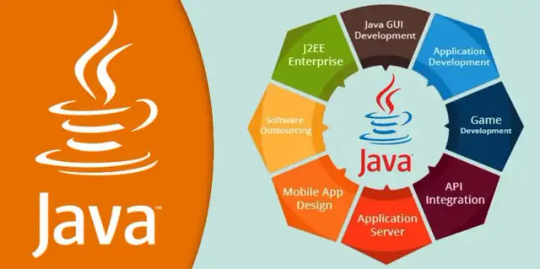
Java is one of the most widely used programming languages in the world, renowned for its portability, robustness, and scalability. Whether you're building Android apps, desktop software, or enterprise-level solutions, Java provides a structured and efficient development process.
To effectively write Java programs, it’s essential to understand the five key steps involved in Java programming. These steps form the foundation for writing, compiling, and running Java code smoothly.
This article will walk you through each of these steps in detail and help you understand how a Java program goes from idea to execution.
Step 1: Writing the Java Code (Source Code Creation)
Every Java program begins with writing the source code using a text editor or an Integrated Development Environment (IDE) like IntelliJ IDEA, Eclipse, or NetBeans.
The source code is saved with a .java extension and typically includes:
Class definitions
Methods
Variables
Control structures
Object-oriented principles like inheritance and encapsulation
At this stage, understanding the syntax and structure of Java is essential, which is thoroughly taught in Best Java training, especially for beginners.
Step 2: Compiling the Java Program
Once the source code is written, the next step is compilation.
Java uses a compiler (javac) to convert the human-readable source code into bytecode, which is stored in a .class file. Bytecode is an intermediate language understood by the Java Virtual Machine (JVM).
Step 3: Loading the Class File (Class Loader)
Before executing, the compiled bytecode must be loaded into memory. This is where the Class Loader comes in. The JVM’s class loader loads the .class files and prepares them for execution.
There are three main types of class loaders in Java:
Bootstrap ClassLoader
Extension ClassLoader
Application ClassLoader
These work together to load the required classes and dependencies into memory in a hierarchical manner.
This phase also verifies the bytecode to ensure it’s safe and conforms to JVM rules.
Step 4: Bytecode Verification and Linking
Once the class is loaded, the bytecode is verified for security. The JVM ensures that the bytecode does not perform illegal operations like accessing private memory or performing unauthorized casts.
Key activities in this step:
Type checking
Stack map verification
Symbol resolution
Preparing memory for static variables
This is one of the reasons Java is considered a secure language—the JVM won’t run unverified code.
Step 5: Execution by JVM (Interpretation or JIT Compilation)
Finally, the verified bytecode is executed by the Java Virtual Machine. The JVM reads the bytecode and executes it either by interpreting each bytecode instruction or compiling it into native machine code using the Just-In-Time (JIT) compiler.
The JVM ensures that the Java application runs on any operating system where the JVM is installed, fulfilling Java’s promise: “Write once, run anywhere.”
Bonus: Understanding the Lifecycle of Java Execution
To recap the complete process:
Write Java code (.java)
Compile code into bytecode (.class)
Load class files into memory
Verify & link bytecode for safety and preparation
Execute via JVM
Each step is designed to ensure that your program is secure, efficient, and portable, which is why Java remains a top choice for developers worldwide.
Why Learning Java the Right Way Matters?
If you're just starting your Java journey, mastering these five steps is crucial. Enrolling in a structured course—like those offered at the Best Java training classes in Chandigarh—can help you gain real-world knowledge, hands-on practice, and guidance from industry experts.
With project-based learning, live mentoring, and certification support, such courses ensure you're not just learning Java—you’re learning how to use it effectively in real development environments.
Conclusion
Understanding the five fundamental steps of Java programming helps demystify the development process. From writing clean code to executing it on the JVM, each step plays a vital role in delivering robust and platform-independent applications.
By mastering these stages—and reinforcing them through practice—you’ll become a confident and capable Java developer, ready to tackle any programming challenge.
0 notes
Text
How do I start programming in Java for beginners?
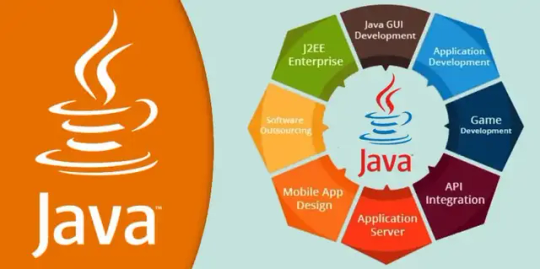
Java is one of the most widely-used and beginner-friendly programming languages in the world. Known for its platform independence, object-oriented structure, and vast ecosystem, Java is an excellent starting point for those new to programming. Whether you aim to develop Android apps, enterprise software, or web applications, learning Java lays a solid foundation.
If you're asking, "How do I start programming in Java as a beginner?", this article will guide you step-by-step through the journey, with no prior coding experience needed.
Why Choose Java as a First Programming Language?
Before diving in, let’s explore why Java is ideal for beginners:
Simple and Readable Syntax: Java is easy to learn with a syntax that’s close to English.
Strong Community Support: You’ll never be alone with issues—millions of Java developers and forums are out there to help.
Platform Independence: Thanks to the JVM (Java Virtual Machine), your code can run on any device.
Object-Oriented Approach: Java teaches core programming concepts like classes, inheritance, and polymorphism early on.
Step-by-Step Guide to Start Programming in Java
Step 1: Understand the Basics of Programming
Before touching code, it’s important to understand key concepts like:
What is a variable?
What is a data type?
What are loops and conditionals?
What is an object and a class?
You don’t need to master them all at once, but having a clear understanding of basic programming logic is essential.
Step 2: Set Up Your Development Environment
To start programming in Java, you need:
Java Development Kit (JDK) Download the latest version of JDK from Oracle’s official website and install it on your system.
IDE (Integrated Development Environment) IDEs make writing code easier and more efficient. Recommended IDEs include:
IntelliJ IDEA (great for beginners and professionals)
Eclipse
NetBeans
These tools offer features like syntax highlighting, code completion, debugging, and real-time error checking.
Step 3: Write Your First Java Program
Once your environment is ready, start with a simple “Hello, World” program:
java
How to run it:
Save the file as HelloWorld.java
Open the terminal/command prompt
Compile using javac HelloWorld.java
Run using java HelloWorld
You’ve now written and run your first Java program!
Step 4: Learn Java Syntax and Core Concepts
The next step is to dive deeper into Java’s syntax and essential topics, such as:
Variables and Data Types
Operators
Control Statements (if, switch, loops)
Arrays
Methods
Object-Oriented Programming (Classes, Objects, Inheritance, etc.)
Structured learning with hands-on coding is the most effective way to grasp these concepts. If you're looking for guided instruction, enrolling in the Best Java training in Chandigarh can provide you with instructor-led classes, real-world projects, and personalized feedback.
Step 5: Practice Through Challenges and Mini Projects
As with any skill, practice is key. You can improve your Java skills by:
Solving basic to intermediate coding problems on platforms like HackerRank, LeetCode, or CodeGym
Rewriting small console applications (like a calculator or to-do list)
Understanding error messages and debugging your own code
The more code you write, the more confident you'll become
Step 6: Build Real-World Projects
Once you’re comfortable with the basics, apply your knowledge to real-world applications. Some beginner project ideas include:
Simple Banking System
Student Record Management
Mini Quiz Game
Weather App using APIs
Projects help you understand how different components of Java come together—like file handling, loops, arrays, and OOP principles.
Useful Resources to Learn Java
Books:
Head First Java by Kathy Sierra
Java: The Complete Reference by Herbert Schildt
YouTube Channels:
Programming with Mosh
Telusko
CodeWithHarry (Hindi-friendly tutorials)
Online Platforms:
Coursera (Java for Beginners)
Udemy (Project-based courses)
GeeksforGeeks and W3Schools (Documentation & examples)
Tips for Beginners Learning Java
Start slow; don’t rush into frameworks before understanding core concepts.
Practice consistently, even 30 minutes daily can make a difference.
Join online communities and coding forums.
Make errors—debugging is part of learning.
Don’t just copy-paste code. Understand what each line does.
Final Thoughts
Starting Java programming as a beginner might seem overwhelming, but with the right roadmap and consistent effort, it becomes an exciting and rewarding journey. Java not only introduces you to foundational programming concepts but also prepares you for careers in software development, web apps, Android apps, and more.
If you're serious about learning efficiently and want to take a structured path, enrolling in the Best Java training in Chandigarh will provide expert mentorship, hands-on projects, and job-oriented learning.
0 notes
Text
What is the basic fundamental of Java?
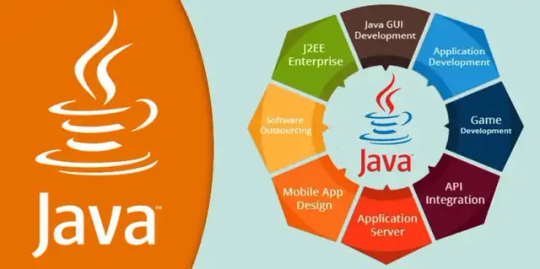
Java is a powerful, object-oriented programming language that is widely used in the software industry for building scalable, secure, and platform-independent applications. Whether you are a beginner exploring the world of coding or an experienced developer brushing up on core concepts, understanding the basic fundamentals of Java is crucial.
In this article, we’ll explore the key principles that make up the foundation of Java programming and why mastering them is essential for any developer.
Why Learn Java Fundamentals First?
Java is not just a language—it’s a comprehensive ecosystem. Grasping the basics helps you write efficient code, debug effectively, and transition smoothly to more advanced topics like frameworks, APIs, and libraries.
Foundational knowledge is often what sets apart a beginner from a confident coder.
1. Java Syntax and Structure
Every Java program must follow a specific structure and syntax. The code is organized into classes and methods, and Java is case-sensitive. Here’s a quick overview of the structure:
java
public class HelloWorld {
public static void main(String[] args) {
System.out.println("Hello, World!");
}
}
Key Elements:
class: Everything in Java revolves around classes.
main(): Entry point of any Java application.
System.out.println(): Used to print output.
2. Data Types and Variables
Understanding data types is one of the most fundamental parts of programming in Java. Java is a statically typed language, meaning variables must be declared before use.
Primary Data Types:
int – integers
double – floating-point numbers
char – single characters
boolean – true or false
Variable Example:
java
int age = 25;
boolean isStudent = true;
3. Control Flow Statements
Control flow dictates how a program runs and under what conditions certain blocks of code are executed.
Main Control Statements:
if, else if, else
switch
for, while, do-while loops
break, continue
Example:
java
if (age > 18) {
System.out.println("Adult");
} else {
System.out.println("Minor");
}
4. Object-Oriented Programming (OOP)
Java is fundamentally an object-oriented language. This means that the design of the program revolves around creating objects from classes.
Core OOP Principles:
Encapsulation – Binding data and methods together
Inheritance – Reusing code from one class in another
Polymorphism – One interface, many implementations
Abstraction – Hiding internal implementation details
Example:
java
class Animal {
void sound() {
System.out.println("Animal makes a sound");
}
}
class Dog extends Animal {
void sound() {
System.out.println("Dog barks");
}
}
Understanding OOP is vital if you want to build scalable and maintainable applications in Java. These principles are taught step-by-step in the Best Java course in Chandigarh, which focuses on both theory and real-time project application.
5. Java Methods and Functions
In Java, methods are blocks of code that perform a specific task and can be reused.
Method Syntax:
java
public static int add(int a, int b) {
return a + b;
}
Methods help you:
Break down complex problems
Avoid code repetition
Improve readability
6. Arrays and Collections
Java provides tools to store multiple values:
Arrays: Fixed-size, same data type
ArrayList, HashMap, HashSet (Collections): Flexible and dynamic
Example:
java
int[] numbers = {1, 2, 3, 4};
System.out.println(numbers[0]); // Output: 1
Collections are particularly useful in real-world Java development where data needs to be stored, searched, or manipulated efficiently.
7. Exception Handling
Errors are inevitable. Java provides a robust exception handling system that ensures your application doesn't crash unexpectedly.
Syntax:
java
try {
int divide = 10 / 0;
} catch (ArithmeticException e) {
System.out.println("Cannot divide by zero");
}
Handling exceptions makes your code more resilient and user-friendly.
8. Java Development Tools
Java developers rely on a variety of tools for writing, testing, and deploying code, such as:
IDEs like IntelliJ IDEA or Eclipse
Build tools like Maven or Gradle
Version control systems like Git
Debuggers and profilers for performance monitoring
Learning how to use these tools early on will help you become an efficient developer.
Conclusion
The basic fundamentals of Java—from syntax and variables to object-oriented principles and exception handling—are essential stepping stones for every programmer. Whether you aim to build Android apps, enterprise solutions, or web applications, these core concepts are non-negotiable.
If you’re looking to get a solid foundation with hands-on practice and expert guidance, enrolling in the Best Java course in Chandigarh can significantly accelerate your learning journey. These courses typically include project-based learning, resume-building exercises, and mentorship to help you succeed in real-world scenarios.
0 notes